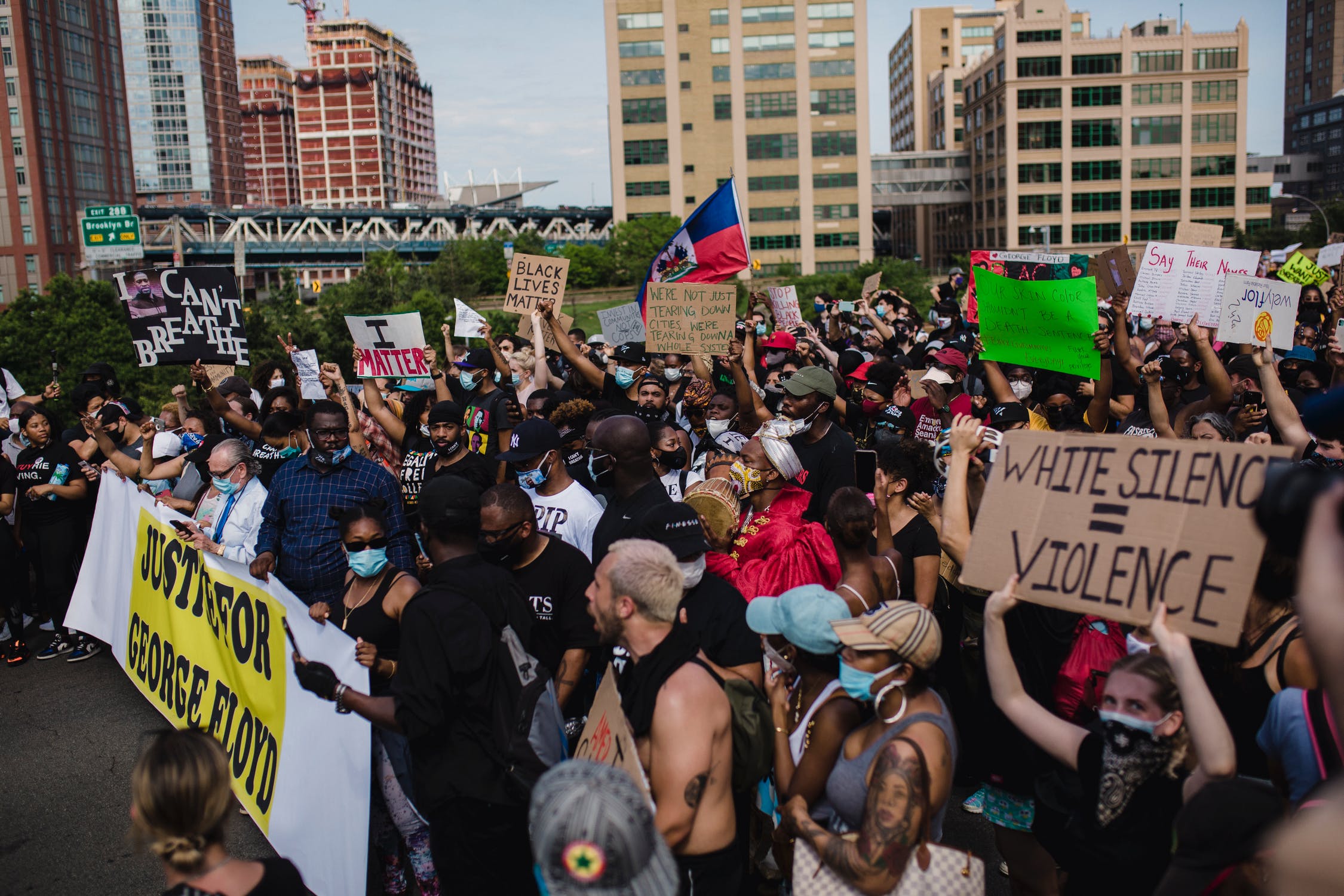Why Do Some Protests Turn Violent and Others Don’t?
Protests against police brutality and coronavirus lockdowns have gripped the U.S. in recent weeks. Examining both protests simultaneously provides an opportunity to better understand the nature of violence.

Published by The Lawfare Institute
in Cooperation With

Protests against police brutality and coronavirus lockdowns have gripped the U.S. in recent weeks. The June 1 edition of the New York Times ran a stark front-page headline, “TWIN CRISES AND SURGING ANGER CONVULSE U.S.” Violence broke out in some places, although almost all protesters were nonviolent. People brought weapons to some protests. But not all protests turn violent. Why do some demonstrations lead to violence and others do not?
Some unrest followed government-imposed coronavirus shutdowns. Reflecting on a rash of anti-lockdown armed demonstrations, the Detroit Free Press on May 17 declared current times “the age of resistance.” These anti-lockdown demonstrations have had a militarized air about them. In April, armed protestors pushed into the Michigan State Capitol in anger over government policies meant to combat the coronavirus. Some, wearing camouflage, stood imposingly at the doors leading from the front steps to the inner chamber, demanding that businesses reopen. Meanwhile, with the economy in freefall, angry Americans in other states such as Wisconsin, Maryland and Ohiomounted aggressive protests of lockdown measures. Many, like the Michigan protestors, carried guns and explicitly invoked the ideals of American liberty.
During the first weeks of June, more than half of state governors had called in the National Guard to quell unrest in response to the video showing the killing of George Floyd and wider anger with racial disparities in the criminal justice system. While not all protests turned violent, in Washington, D.C., at least 60 members of the Secret Service were injured. In Detroit, protesters threw M-80 fireworks at police, and officers responded with rubber bullets and tear gas. In Buffalo, police pushed over a 75-year-old protester—fracturing his skull and rendering him unable to walk—and in the same city, a protester drove a vehicle into police officers.
Why does violence occur in some places and not in others? People everywhere see the videos, most people can feel outrage, many people protest, but few individuals get violent. Is it the unpredictability of crowds? Too much police force at protests? Too little force? Despair? The New York Times cited examples of city officials who largely refrained from deploying violence against protestors—including in Petersburg, Virginia; Houston, Texas; and Newark, New Jersey.
As a behavioral scientist, I seek to understand the sources of violence generally and when policy choices make political violence more likely. Examining both the police brutality protests and the lockdown protests simultaneously provides an opportunity to better understand the nature of violence.
I suggest this is the harbinger of political violence: Look for an expected scarcity serious enough to impact expected survival, and confrontations that take place where the relationship between the people and the state amplifies mistrust. The clash between groups of people—the state and societal groups—intensifies and highlights the fundamental constraint of survival driven by scarcity; conflict between groups becomes more intense and compelling than conflicts between individuals. News outlets, for example, tend to cover broad disruption more than individual grievances.
What type of scarcity leads to violence? When people expect shortages in toilet paper, they panic but tend not to turn violent. When a governor requires workers to stay home while a landlord requires rent and a child requires food and shelter, people protest. When bureaucracies ration medical equipment, treatments or vaccines in ways citizens do not understand, they protest. When bigotry and injustice persist year after year, people protest. When people perceive others unfairly or incompetently making life-and-death decisions impacting self and loved ones, armed protests occur. When people see others, especially those whose authority has not been earned through trust and respect, taking the life of another, violence begins to emerge.
First consider the lockdown protests. Interestingly, during the Great Depression of the early 1930s and the Great Recession of 2008, violent crime fell while organized crime, nonviolent domestic crime and fraud rose. On both occasions, the government actively promoted economic recovery and getting people back to work. The key difference between then and now is that unemployment in the Great Depression and the Great Recession was prompted directly by economic forces beyond anyone’s control. The current recession, in contrast, resulted from politician-mandated shutdowns in response to public health threats.
Unemployment is nearly 20 percent, and the Congressional Budget Office predicts a 38 percent drop in gross domestic product. Gun sales spiked by 70 percent this April compared to last April. On May 5, a security guard was killed for telling a customer to wear a face mask. Retail workers across the country are facing threats and physical harm for enforcing social-distancing and mask rules. But there haven’t been large outbreaks of coronavirus-related violence.
Now, consider the protests inspired by the killing of George Floyd, which have turned more violent than the coronavirus lockdown protests, sometimes escalated by a few protestors and sometimes by police. Racism-related protests have instigated more violence than lockdown protests because police brutality, an arm of the state, directly caused Floyd’s death, while in the lockdown scenario the state is actively and credibly taking steps to prevent coronavirus-related deaths while minimizing the impact on American families. In fact, because shutdown restrictions occurred in the name of public health, most Americans supported these decisions. At the end of April, three-quartersof Americans supported continuing shutdowns for at least two more weeks. Meanwhile, 78 percent supportedcriminally charging the officers involved in Floyd’s killing. A more cynical theory of this difference is skin-color based: The state responds much more differently to protests by mostly white armed protestors than to Black Lives Matter protesters of diverse backgrounds.
Protests show the strength of U.S. governing institutions in conflict with the strength of the American cultural expectation of the freedom to protest and fight against those institutions when they act with violence and coercion. In liberal and free societies like the United States, individuals organize to keep the power of the government in check, even while the government has the power to keep protests from turning violent. The entire system of liberty and respect for human dignity relies on an ability to use violence.
The key to violence lies in expectations: when expected scarcity meets expected survival (when life and death for self or kin are at stake). The real and dramatic economic scarcities facing most Americans today arose from the imposition of mandatory business closures and other restrictions on movement and commerce. Some people viewed this as government overreach—stealing the livelihoods of ordinary people and putting families at risk. But the overreach in the killing of George Floyd was much more extreme. The video of his killing posted on the internet for the world to see was like a punch to the gut—a state that can do this to Floyd can turn on me. State violence against people of color creates for Americans of color an immediate experience of scarcity of freedom from fear. And the video of Floyd’s killing by police shook a critical mass of the rest of America.
To prevent further outbreaks of violence in the U.S., even small-scale violence, political leaders must take seriously the voices of the American people and the ideas of expected scarcity, expected survival, and the relationship between individuals and the state. In American protests today, people organize into groups to show power, essentially warning elected leaders that there is a limit to government authority.
Expect a continuation of protests, some peaceful, some armed, some with vandalism and incidents of violence. Any response needs to be carefully measured, a balance between inaction and overaction that will instigate or enable further violence. The United States’s institutions of governance are strong, but so are the nation’s institutions of protest to counterbalance that government power.
Author’s Note: Thanks Charlotte Bohning and Zachary Pine for helpful comments. Errors are my own.



.jpg?sfvrsn=676ddf0d_7)

